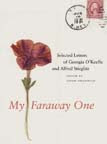 As I mentioned on Friday, my friend Anne has agreed to tell us all a little bit about her trip to England this summer ~ and to share her beautiful photographs. So, Anne, take it away:
As I mentioned on Friday, my friend Anne has agreed to tell us all a little bit about her trip to England this summer ~ and to share her beautiful photographs. So, Anne, take it away:I am delighted that Janet invited me to share some of my photos and memories of the 2007 Attingham Trust Summer School on her blog. From July 6 to 24 I traveled the English countryside with 47 others, also interested in the history, architecture and collections of the country house. We met fascinating people, saw magnificent buildings under a cold and wet summer sky, and ate lots of cake. Over the next couple days, I hope to touch on a few of the highlights.
For the first week, we had the privilege of staying at West Dean College, a country house that has been transformed into a community of artists and craftspeople specializing in such areas as tapestry weaving and furniture conservation. Its situation in the Sussex downs is exquisite. From my room at the front of the house, I had a view (see below) of sheep grazing on rolling hills dotted with clumps of trees (which also provided soothing background music!). The people who manage the West Dean estate are committed to sustainability and community involvement. These values are apparent in many of the estate's initiatives, among them a renewable wood-fuel heating system that provides for the entire college and an affordable housing scheme for local people.
The present house was built between 1804 and 1830 by the Selsey family, who wished to expand the 17th-century manor house on their estate. Built of flint (a distinctive local stone), it was designed by the architect James Wyatt, whose romantic neo-Gothic style is clearly reflected in the castellated façade. Of particular interest are the gardens, which are divided into several parts, including walled kitchen and fruit gardens, an arboretum, an Edwardian pergola designed by Sir Harold Peto, and what is referred to as a ‘naturalist spring garden’ ~ a series of ponds and beds planted alongside a winding path that leads away from the main house. This last garden is filled with vistas and surprises, such as two surrealist sculptures envisioned by Edward James, the former owner of the house and founder of the college. When two trees in the garden were dying of old age, James had them encased in fiberglass ~ as the wood rotted away, the man-made shells were left standing. They are a fitting symbol of the interdependence of art and nature, both hallmarks of life at West Dean.




















No comments:
Post a Comment